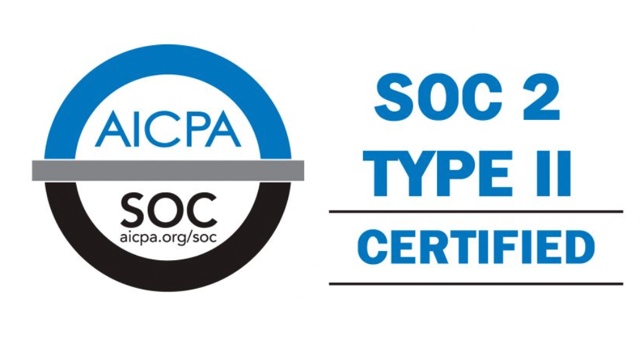
From 100 to 1 million Transfers: Scaling MFT for Enterprise Growth
From 100 to 1 million Transfers: Scaling MFT for Enterprise Growth Ever wondered what happens when your daily file transfers multiply by
Data increasingly manages our business and personal lives, and today’s global organizations rely on the constant flow of data across the interconnected network world. At the same time, the business risk also goes up significantly by increasing the quantity and value of data. With data continuing to increase in value, organizations need to recover critical data quickly if it becomes compromised.
Additionally, business transformation, advanced cyber-attacks and insider errors are constant threats. As the information footprint expands, organizations continue to look to the cloud for easy, cost-effective modernization methods, adding yet another opportunity for compromising an organization’s critical data. Ongoing threats are continuing, and while standard backup and disaster recovery are crucial, they are not enough. Cyber resiliency—with a cost-effective isolated recovery environment—can add the necessary protection.
The client research in the 2022 release of the IBM Cost of a Data Breach report reveals a startling increase in breaches, with 83% of organizations studied having had more than one data breach and 45% of the breaches being cloud-based. Transforming infrastructure to the cloud does not automatically equate to better data protection.
The report further shares that 60% of organizations’ breaches led to increased costs, which were passed on to customers.
Advanced threats are only part of organizations’ risks in moving to the cloud. The issue is being able to recover the data and ensure business continuity. Data resiliency through using standard backups has dramatically evolved over the years as technology has advanced. Now, the need to recover data, files and file structure, virtual machines and infrastructure has made disaster recovery (DR) data centers a necessity.
IBM has recognized the value of DR and backup by leveraging these use cases and providing increased client value through the IBM Cloud business model for disaster recovery. Using IBM Cloud as secure disaster recovery, infrastructure for cloud or on-premises disaster protection brings the following benefits:
By combining the value of the cloud with the VMware virtualization model, organizations can now lower costs and complexity while maintaining the level of compliance and data resiliency needed.
The ransomware business, however, continues to expand and evolve. This evolution drives the ransomware’s technology and quality and pushes the attacks into a new business model.
This means that organizations now face Ransomware-as-a-Service (RaaS). RaaS is now making it easier than ever for a threat actor to attack an organization. The attack motives can be any number of reasons—including financially motivated, political or destructive—with no restrictions on the operator having any technical knowledge. In addition, multiple ransomware operators now offer a wide array of tools and services to make ransomware attacks more effortless. RaaS is now a complete business model that includes marketing and technical support operations. This now puts backup and disaster recovery solutions to the test.
With business-driven applications moving to the cloud, standard backups coupled with DR have been working and evolving to help protect data. However, with the value of business data increasing and the agile nature of application development, advanced threats like ransomware are following along into the cloud model. Using backup and DR solutions cannot always keep up. Now, by adding cyber resiliency capabilities to IBM Cloud, a third level or layer of protection is emerging. Just as there are differences in capabilities between backup and DR, cyber recovery brings its own specific nature to protecting critical data.
Until today, business continuity meant combining the best of standard data backup with disaster recovery technology. By providing cost-effective DR in the IBM Cloud, IBM has reduced the high cost overhead of replicating to a DR data center. Now, by providing an isolated hardened infrastructure in the cloud, IBM has taken the next step clients need for cyber resiliency.
First, it is essential to understand how disaster recovery and cyber recovery work together. Disaster recovery focuses on protecting the business from geological or regional incidents. It’s usually comprehensive in its data volume, and in the case of an incident, the point of recovery and fallback is quick—sometimes instantaneous.
Cyber recovery differs slightly and protects the entire business from a targeted selective attack. The key to recovery is the reliability of the data. Since the data is critical, the impact on the company is global—a situation different from the regional, more contained incident when a DR infrastructure provides protection. Admin access to the isolated recovery environment is highly protected, and data is typically scanned to ensure reliable recovery.
With IT transformation to the cloud, IBM continues to follow the momentum by engineering and providing an automated, isolated, cyber-resilient infrastructure. Working with key partners like VMware, Juniper and Veeam, a completely engineered cyber recovery infrastructure can provide the foundation for clients and partners to create a hardened and virtual “air-gapped” environment for protecting critical data copies and backups.
Message replication configuration trade-offs
IBM Global Mailbox - Technical overview
Browse Categories
Share Blog Post

From 100 to 1 million Transfers: Scaling MFT for Enterprise Growth Ever wondered what happens when your daily file transfers multiply by

In today’s fast-paced world of data analytics and AI, optimizing your data infrastructure is key to unlocking valuable insights and driving innovation.

In today’s fast-paced world of data analytics and AI, optimizing your data infrastructure is key to unlocking valuable insights and driving innovation.
We are a forward-thinking technology services provider dedicated to driving innovation and transformation across industries.


| Cookie | Duration | Description |
|---|---|---|
| cookielawinfo-checkbox-analytics | 11 months | This cookie is set by GDPR Cookie Consent plugin. The cookie is used to store the user consent for the cookies in the category "Analytics". |
| cookielawinfo-checkbox-functional | 11 months | The cookie is set by GDPR cookie consent to record the user consent for the cookies in the category "Functional". |
| cookielawinfo-checkbox-necessary | 11 months | This cookie is set by GDPR Cookie Consent plugin. The cookies is used to store the user consent for the cookies in the category "Necessary". |
| cookielawinfo-checkbox-others | 11 months | This cookie is set by GDPR Cookie Consent plugin. The cookie is used to store the user consent for the cookies in the category "Other. |
| cookielawinfo-checkbox-performance | 11 months | This cookie is set by GDPR Cookie Consent plugin. The cookie is used to store the user consent for the cookies in the category "Performance". |
| viewed_cookie_policy | 11 months | The cookie is set by the GDPR Cookie Consent plugin and is used to store whether or not user has consented to the use of cookies. It does not store any personal data. |
Thank you for submitting your details.
For more information, Download the PDF.
Thank you for registering for the conference ! Our team will confirm your registration shortly.
Invite and share the event with your colleagues
IBM Partner Engagement Manager Standard is the right solution
addressing the following business challenges
IBM Partner Engagement Manager Standard is the right solution
addressing the following business challenges
IBM Partner Engagement Manager Standard is the right solution
addressing the following business challenges